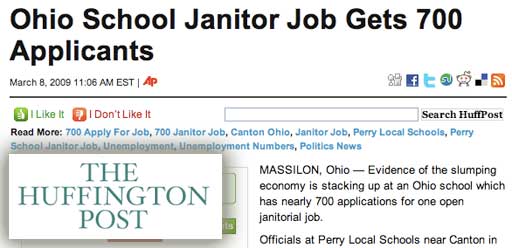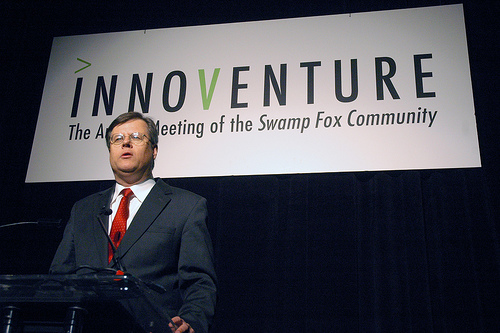How many freaking hats to do we wear? As entrepreneurs, business people, business owners, marketing professionals, whatever it may be…we wear so many freaking hats. With all of these social media technologies sprouting up faster than the hair on my face…we are constantly trying to figure out how we use them, for which audiences, and which brand.
Yep…these hats we wear…they are our brands. Really, think of all the brands we represent under our own umbrella? At any point in time, we are involved in at-least three to five different things where we have to take off one hat and put on another. Currently, I juggle four different hats…the company I am own (Bobby Rettew, LLC), the class I teach (Business Writing at Clemson), my personal life (home life, family, marriage, etc.), and the collegiate networking event I have developed (NetworkBash at Clemson). Each of these hats support the overall brand of Bobby Rettew. But each one of these hats, these brands are like subsidiaries of a bigger company umbrella.
Why is this important…as more and more communication tools emerge and social media technologies help us communicate…we have define & develop each brand so that we know how to communicate while we are wearing each particular hat (brand). You have to define the brand before you can figure out how to communicate the brand. So step back and think, what is the mission statement of each brand. Define it…when you put on that particular hat for that brand, what is your mission statement. Now the mission statement for that brand is more than just the mission statement of the company itself, but how you represent that company.
Example, let’s take Bobby Rettew, LLC for a second…it is one of the hats that I wear. Let’s write the mission statement for this brand:
1) Bobby Rettew, LLC is a messaging company that uses new media and social media to produce and distribute the message online.
2) Bobby Rettew is the principle owner of Bobby Rettew, LLC as a storyteller, message creator, new media producer, videographer, and non-linear editor while also handling all marketing and public relations.
So when I put on the Bobby Rettew, LLC hat…I am constantly trying to find new ways to market and spread the word about our services while servicing the clients that we represent.
Now….how the hell do we deal with all the ways we communicate for each brand…each hat we wear. I have to keep things separate to try to manage. For starters, I have separate email addresses for each brand, each hat that I wear. But hold on…there are so many freaking different ways to communicate..and so many hats…and so many audiences.
Well…each hat that you wear, each brand you represent has specific audiences and specific ways to communicate to those audiences. Using LinkedIn might make sense to communicate as I wear my personal brand but might not work while wearing my Business Writing at Clemson brand. We have to define each method of communication for each brand and how we use each method.
While I am wearing the personal Bobby Rettew brand, I use Twitter, Facebook, LinkedIn, Blog, email, video, and Face-To-Face. But each one has different communities, different ways we interact, and different ways we use that technology. BUT EACH IS DIFFERENT…and they are only ways we communicate.
OK…step back for one second because not all of these work for all communities! Not all of these work for all of your brands! Really…if Twitter is not appropriate…THEN DO NOT USE IT!
So, how do you figure this out? Get out a piece of paper and draw a triangle. Label each point with Purpose, Audience, and Delivery. Then above the triangle, write the word Context. The context is the brand you are trying to communicate. Identify the audience and the purpose of the brand…then list all the delivery methods (Twitter, Facebook, Face-To-Face, Video, Email, etc.) that would work to meet the audiences needs. Choose one, two, three, or all of the above.
Why am I writing this….because there is a lot of hype about social media technologies and they are growing not only in numbers but also market engagement. As these social media technologies grow, more groups are engaging from both an audience perspective and from and marketer perspective. Throw this in the bag of tricks with all the other tools that we as practitioners use to execute our strategies. It is becoming more and more important to identify why and how we use each tool to meet the audiences needs.
So many marketing professionals are starting to blend the strategies of one communication strategy to the next. Each communication strategy is not a one size fits all. This is evident in the increase spam we receive in email, less engaging Twitter followers, a Fan Page invite for every cause that has some sense of life, and blog after blog after blog entry that has no purpose other than just increasing the digital footprint.
Hello friends…did you know that print still works, television advertising is still affective, Face-To-Face is alive an breathing, and word-of-mouth is the most powerful of all. Each of these is a technology…each with an inherent purpose. So here is the real reason why I am writing this…we (including me) need to sit back and identify why and how we are using each of these technologies to meet the needs of the audience and the purpose of the brand. There is a fine line in capitalizing in a new technology when it is only a technology.
I am writing this to myself, to remind myself that I am a practitioner that represents the best interest of my clients and their brands. How are we helping our clients wear their hats, their brands, and communicate their message. If the hat fits and the megaphone is working….then lets communicate the brand. What hats are you wearing and how are you communicate those brands? I am not a brand strategist…I am just a professional communicator.



